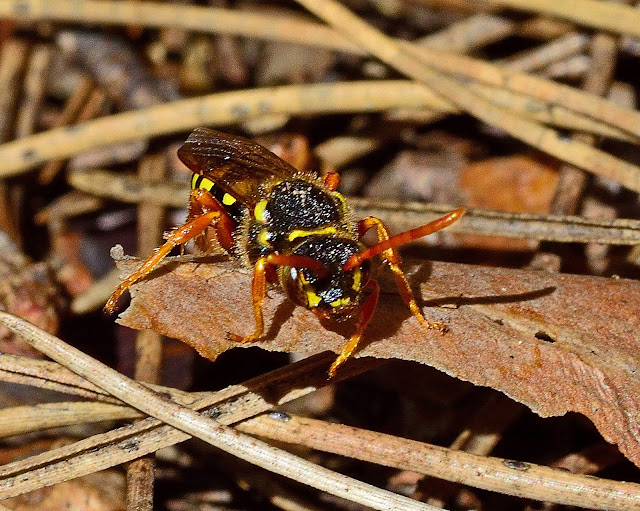These large flightless beetles are dependent on the solitary bee to complete its lifecycle.The female will dig a nesting burrow close to a bee colony.The hatched larvae known as tringulins, will then climb up to reach flowers where their hook- like forelegs enable the larvae to attach themselves to visiting bees.The aim is to be taken by the bee to its nesting burrow where it feeds on the bees' egg and pollen store.Finally it pupates in the burrow over the winter and emerges as an adult beetle the following year.
Meloe proscarabaeus or the Oil Beetle as it is commonly known gets this name by releasing a pungent oily liquid in defence when threatened.It is suffering a steady decline in population and is currently a BAP species(Biodiversity Action Plan).The female beetle is larger than the male and the following photo shows the difference in size of the sexes.





